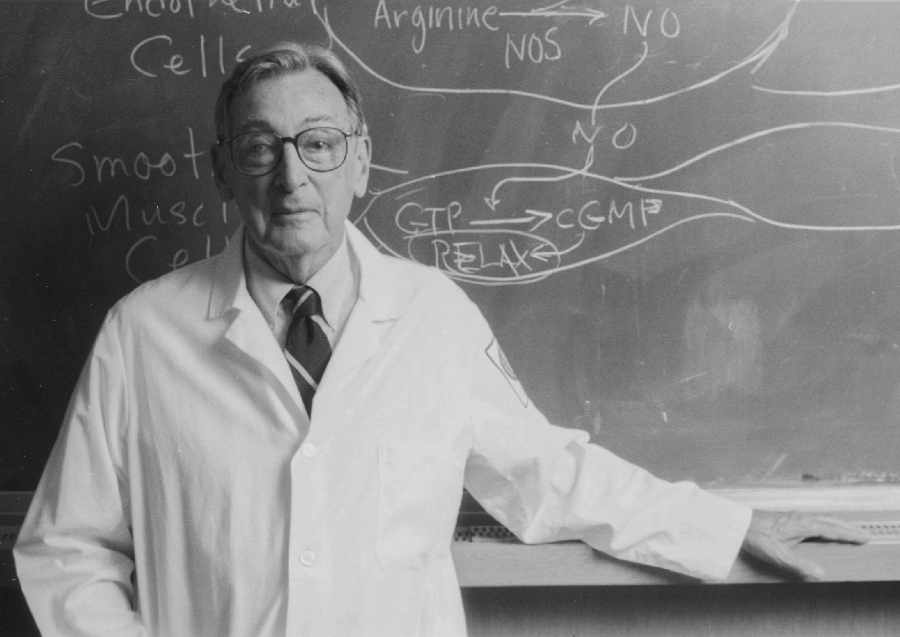History of the Department

Dr. Robert F. Furchgott
Written by the former Distinguished Professor and Nobel Laureate Dr. Robert F. Furchgott
Prior to 1956, there was a single Department of Physiology and Pharmacology at our institution - then called the State University of New York (SUNY) College of Medicine at New York City (even though located in Brooklyn) and later changed in name to SUNY Downstate Health Sciences University and finally to SUNY Health Science Center at Brooklyn. However, in 1956, with the opening of the Basic Science Building on Clarkson Avenue with its ample space and with good financial support from the State, separate departments of Physiology and Pharmacology were established. Professor Chandler Brooks, who had headed the joint department, stayed on as chairman of the separate Department of Physiology and as Dean of the newly organized graduate school, and I had the good fortune to be appointed as the first Chairman of the new separate Department of Pharmacology. As it does today, the department occupied most of the space (over 25,000 square feet) on the sixth floor of the Basic Science Building. At that time, about one quarter of the space assigned to the department was designated as space for laboratory exercises for medical students taking the pharmacology course. However, over the years, with the gradual phasing out of such exercises, that space has been largely converted to space for research laboratories. With the start of the new department in 1956, I was able to recruit a number of new faculty members over the first couple of years. Most of them were doing research in what was then termed biochemical pharmacology. One of them, Dr. C.Y. Kao, who continued as a member of the department until his untimely death in May, 1998, was a pioneer in studying the effects of drugs on the electrophysiological properties of smooth muscle cells. Our graduate student training program began in the first year of the new department. From 1960 to 1982, when I retired from the chairmanship of the department, we had support for our graduate training program from the National Institutes of Health. Many of our graduate students and postdoctoral fellows from those years have had distinguished careers in academia and in the pharmaceutical industry.
From 1982 to 1989, the department was headed by an acting chairman - first for two years by Dr. Julius Belford, now retired, and then for five years by Dr. Stanley Friedman, who is still a very active member of the department both in teaching and research. In 1989, Dr. Robert Wong, a professor at Columbia University College of Physicians and Surgeons, became the new chairman of the department. By that time I had retired and the number of faculty members remaining in the department was reduced to five. Dr. Wong recruited a number of new faculty members within the first few years, so that there are now 14 full time members in the department. The research interests of Dr. Wong and the new faculty members, as can be seen from the individual faculty listings, are mainly in the neurosciences. The influx of new faculty members with active research programs has again made the department a stimulating place for the training of graduate students and postdoctoral fellows. As of March 1998, the Department of Pharmacology once more joined with the Department of Physiology to form a single Department of Physiology and Pharmacology with Dr. Wong as its chairperson.